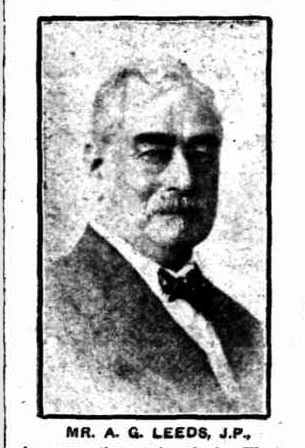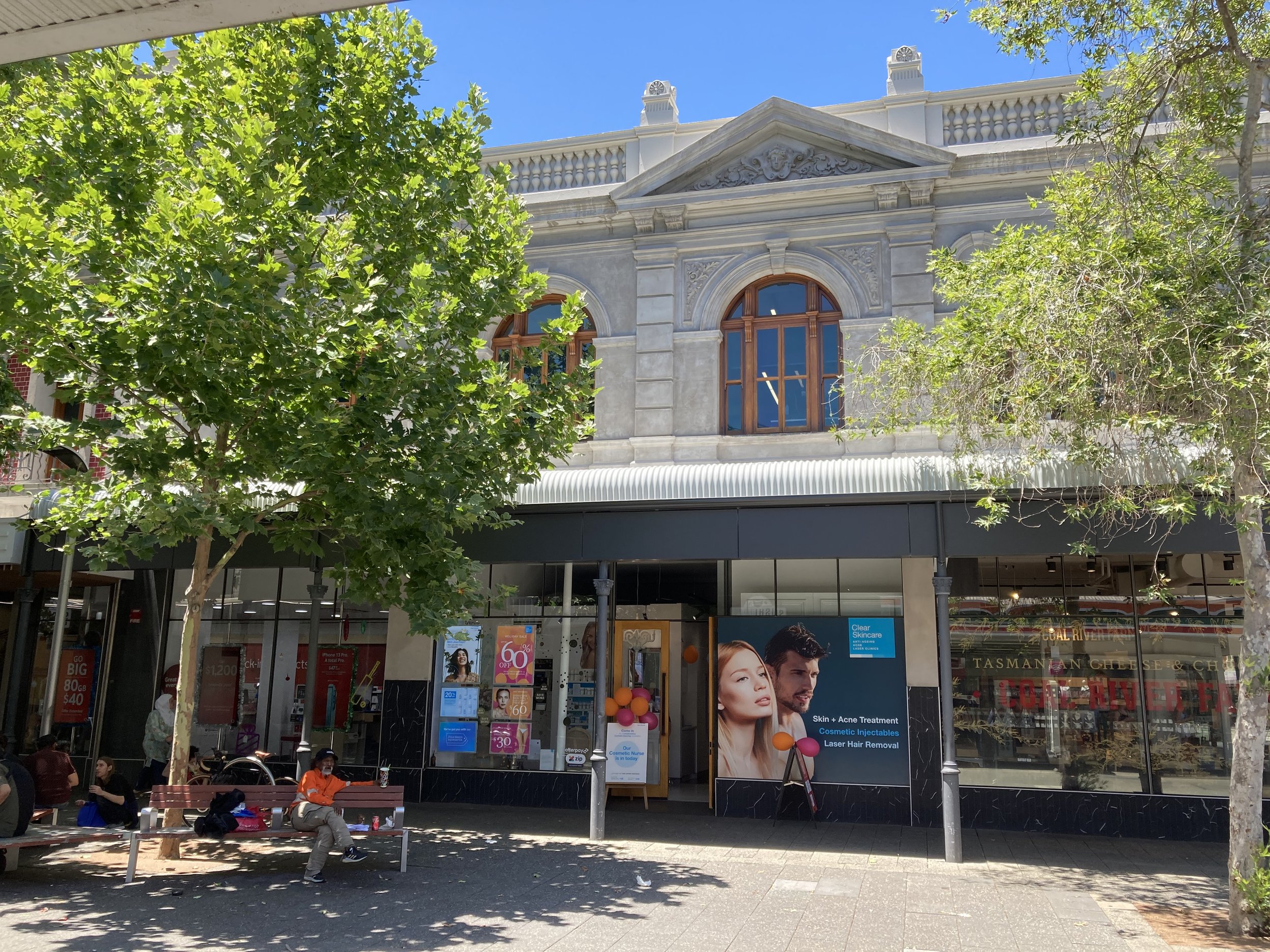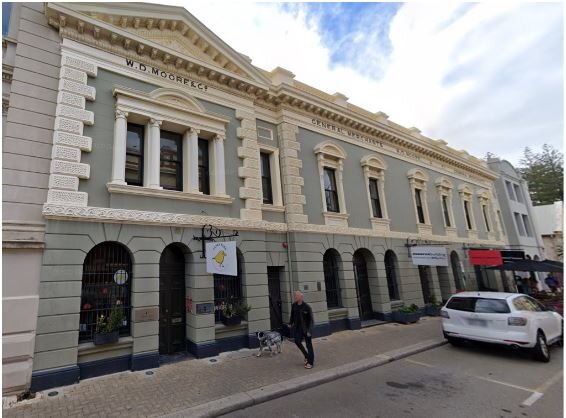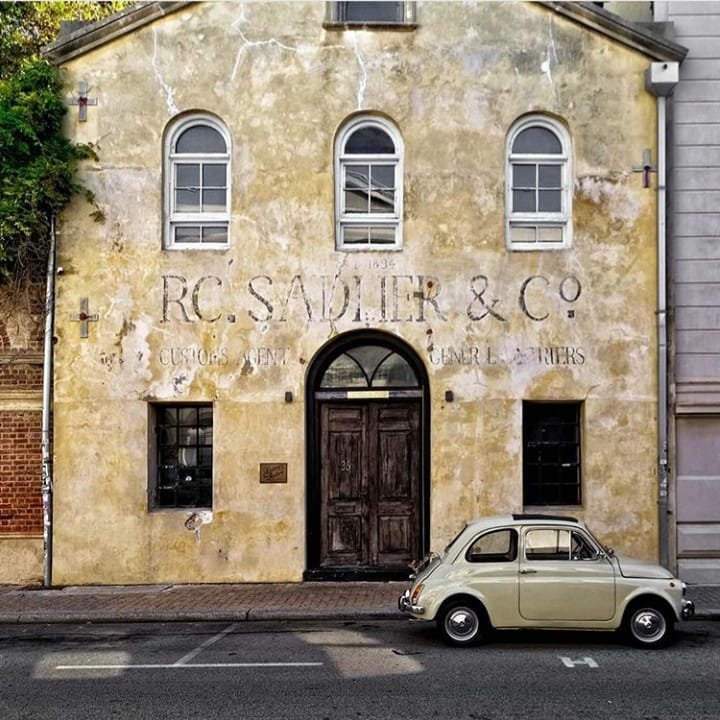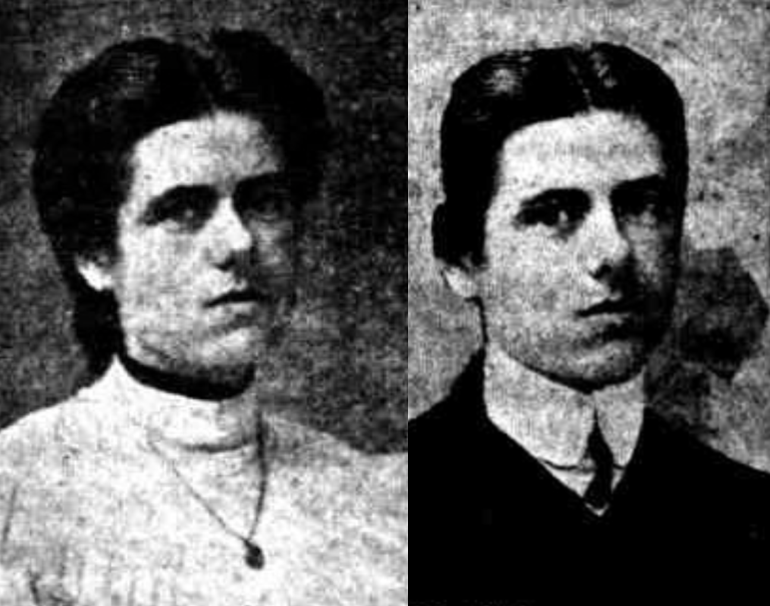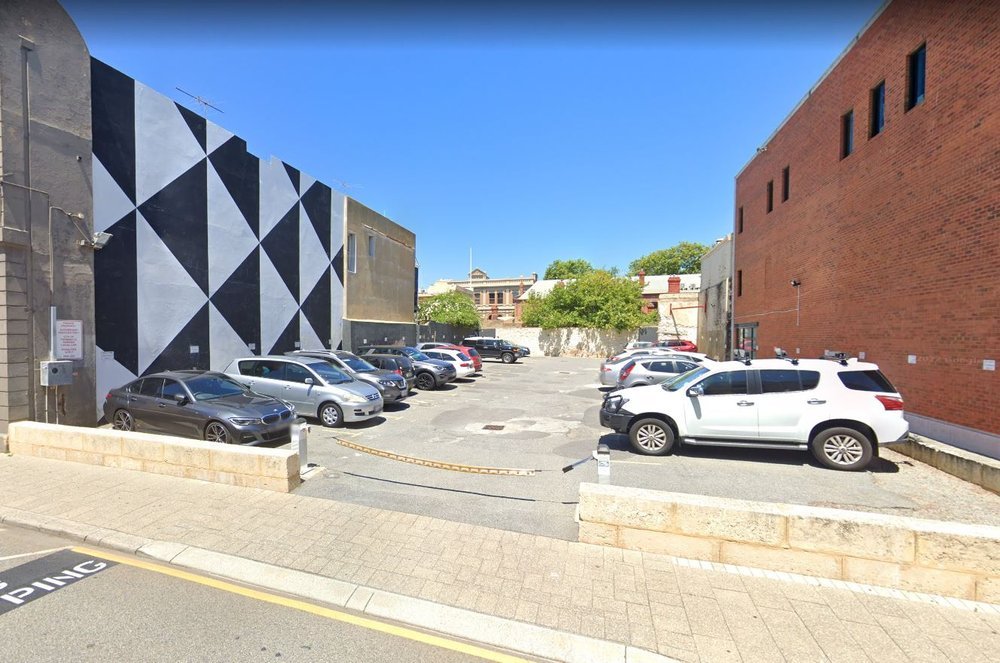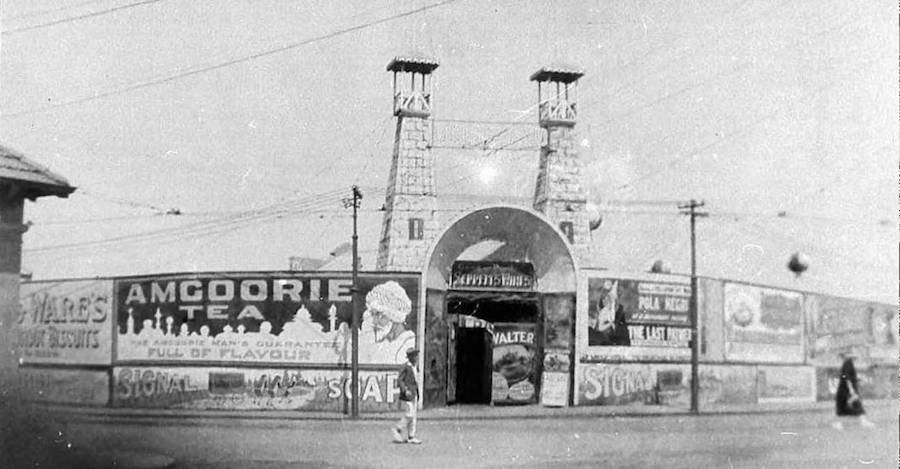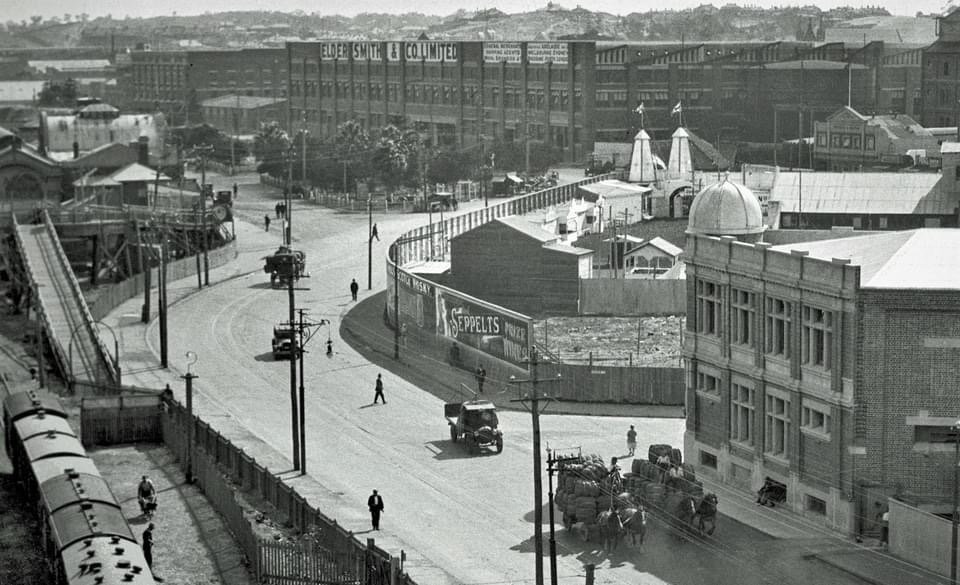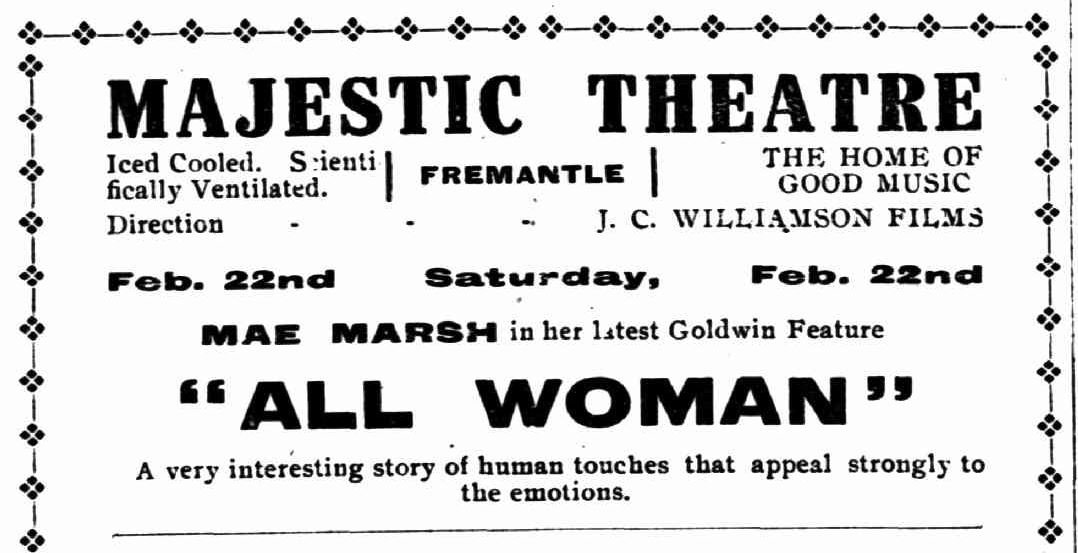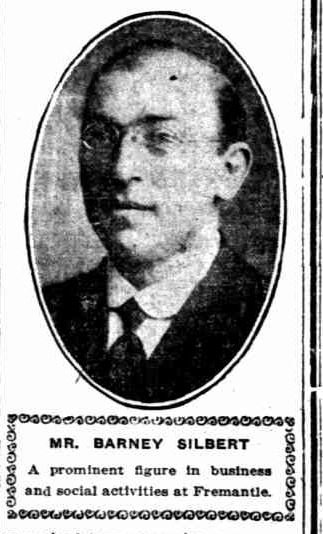125-137 High St (was 147-157 pre 1938)
The Manning family emigrated to Australia in the 1830s and Lucius Alex Manning became the biggest landowner in Fremantle. The Manning buildings were built from 1902 to 1906 for a cost of £2,243, as an investment, by the trustees for the Manning Bros. Estate. Cavanagh & Cavanagh were the main architects for the buildings with various builders for the different stages.
1901 FREMANTLE LADIES' CLUB. The usual monthly meeting of the Fremantle Ladies' Cycling Club was held in the club rooms last Monday week. The president (Mrs. Banfield) presided over a large attendance. Two ladies ware admitted as members of the clab. It was decided to make an excursion to Maylands, to visit the Blind Asylum, on Wednesday, July 10… (reference)
1904 FOR Sale, cheap Confectionery, Fruit and Cool Drinks and Tea Business, doing good trade. One of the best positions High-st., owner retiring through ill health. Mrs. Murnane, 149 High-st., Fremantle. (reference)
1908 MR. and MRS. BANFIELD AT HOME. The wonderful strides which Fremantle has made within the past ten years are well illustrated by the handsome shops which now adorn High-street…Indeed, in Western Australia there are no tea rooms superior in spaciousness, finish, and completeness of appointment than the splendid premises which were formally opened on Thursday afternoon by the Mayoress (Mrs. W. A. Murphy). The name of Banfield is the oldest associated with the trade in Fremantle, and the rebuilding of the old premises, which formed part of the Davies estate, have resulted in the Premier tea rooms being located not only in the very heart of the town, but amid the best surroundings. Mr. and Mrs. E. B. Banfield were “at home" to a large circle of friends on Thursday afternoon, receiving their guests in the handsome upper room, which is destined to be the scene of many future wedding breakfasts and receptions… One is specially struck by the loftiness of the rooms and their coolness during a marked period of heat, and by the ornate appointments. The shop, with a multitude of marbletopped tables, runs nearly the whole depth of the building, having a ladies' private room at the end. Behind this is the culinary department, beautifully clean and neat. From the shop a handsome staircase leads to the spacious reception room above, and there is likewise a smoke room for the use of gentlemen, the only one of its kind in the town. (reference)
1908 A meeting, called for the purpose of reforming the Fremantle Parliament, was held on Wednesday night at Banfield's Supper Room. The ex-Speaker, Major Townsend, presided. It was decided, after discussion on the motion of Mr. Ockerby, to open the parliament on Monday, the 13th, and Mr. Stowe was unanimously elected premier, and given permission to form a ministry and introduce a policy by the above date. (reference)
Read about the conditions for pastrycooks in 1911 (link)
1917 The Premier Tea Rooms are in High street, Fremantle, near the Town Hall. Mrs. P. Burns, the proprietress, advertises in our columns light refreshments at all hours, grills, etc., with expert and smart attention. (reference)
1929 N. Koutsoukis, proprietor of the Piccadilly Cafe, Fremantle, was charged by the Hotel, Club, Caterers, Tearoom and Restaurant Employees' Industrial Union, in me rremanue industrial vourt yesterday, before with having failed to keep a roster posted at his premises, with having failed to keep a proper time and wages book, and with having failed to give his employee, K. P. Knell, a full day off in one week and to pay her apron money. (reference)
1932 Down High-street, Fremantle, there is a store for Boots and Shoes which are there to be sold to the people for their pedal uses. And the manager of that store is a man once seen never forgotten. His name is that very, very uncommon one called Jones. He is the greatest butcher of shoe prices known. In fact, it's worth a trip from Sydney to see that guy, as the Yanks would call him, handling shoes. He is the manager, of course; but above him and below too, is that comfortable name of EZYWALKIN. That name, which is a household word all over Australia and which implies ease and comfort in foot wear… (reference)
Abraham ‘Izzy’ Orloff (1891-1981), a very famous WA photographer had a photographic studio in this building from 1937-1949. To read more about him: Freostuff (link)
OCCUPANTS
Lot 384 & 385 owners: 1929 - 1937 (384)Lloyd, George (385) Davey, J W, 1855 - 1859 (384)Manning, H (385) Curtis, A, 1876 - 1878 Manning, L A
No. 125(was 147 pre 1938)
1897 - 1907 Banfield, J V, baker
1909 - 1913 Banfield, E B, pastrycook, Premier Tea rooms
1914 - 1917 Upson, H W, pastrycook
1918 Burns, Mrs M, pastrycook and Burns, Patrick, Premier Tea Rooms
1919 Phillips & Thomas, pastrycooks
1920 Halleen, Mrs Emily E, tea rooms
1921 - 1926 Gething, Charles, tea rooms
1927 - 1930 Koutsoukis, P, tea rooms Piccadilly Tearooms
1931 - 1932 Anastases & Stamataglous, tea rooms
1933 - 1935 Stanbury Ltd, W H, grocer
1935 - 1939 Samols, S, cafe
1939 - 1949 Samols, Ptr, cafe
No. 127(was 149 pre 1938)
1897 - 1904 Breckler Brothers, boot importers
1905 Murnane, Mrs. Alice, fruiterer
1906 Gessey & Willcocks, butchers
1908 - 1932 Baker Bros, butchers
1911 - 1912 H Rudwick, manager
1913 - 1920 Frederick Doyle, manager
1933 - 1939 D'Raine W, butcher
1939 - 1949 Baker Ltd J & L, butchers
No. 129 (was 151 pre 1938)
1897 Lynam, Mrs M, stationer
1898 - 1906 Bendall, Charles, newsagent
1908 Lane, A E, painter & signwriter
1911 - 1916 Evans & Co. tailors
1917 - 1920 Evans, A B, tailor
1921 Barrier, Alexander, clothier
1922 - 1949 Yench, Fred, clothier
1935 - 1942 Peek, Roy, tailor
No. 131(was 153 pre 1938)
1893 - 1900 Myers, I, tailor and outfitter- started in Packenham st
1901 Woodlock, William, cafe
1902 Robinson & Harber, florists, George Harber
1903 - 1911 Black Bros. fruiterers
1912 - 1918 Rappeport Bros. fruiterers
1919 - 1920 Tate and Rappeport, fruiterers
1921 - 1928 Rappeport, Alexander, fruiterer
1929 - 1932 Warry, Mrs Phyllis, confectioner and cool drinks
1933 - 1947 Rappeport, Mrs E, confectioner
1949 Samios F, confectioner
No. 133 & 135 & 137 (was 155-157 pre 1938)
1893 - 1917 McDonald & Co Ltd, grocers & ironmongers
1918 - 1925 Breckler Morris boot store
1926 - 1930 Rappeport, Alex, boot importer
1931 - 1932 Shoe Arcade (Mrs Esther Rappeport)
1933 - 1938 Ezywalkin Ltd, shoe arcade
(1934 - 1936 Edward Jones, manager)
1937 - 1949 Orloff, A, photographer
Thornett, A, tailor , Whittle, Miss F, dressmaker
No. 133 (was 155 pre 1938)
1911 - 1913 Austin M. & G. Recover Co. Ltd. (reg. off) (F. H. Tipping, attorney)
1911 - 1916 Tipping F. H.(McDonald & Co)
1939 - 1949 Raneri, G, tailor
No. 135 & 137 (was 155-157 pre 1938)
1938 - 1949 EZYWALKIN PTY. LTD Boot and Shoe Store



